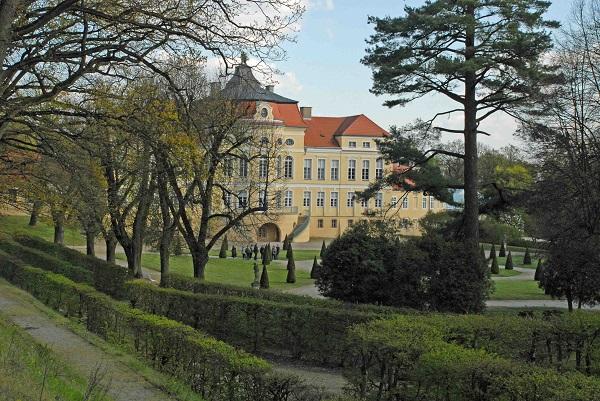
-
 Thank you for your method for mincing jalapeno peppers. I use it!
Przez:domowypatchwork 29Dec2020
Thank you for your method for mincing jalapeno peppers. I use it!
Przez:domowypatchwork 29Dec2020 -
 Thank you!
Przez:domowypatchwork 29Dec2020
Thank you!
Przez:domowypatchwork 29Dec2020 -
 Inka is our chickory coffee. I think that you can use any kind of coffee ...
Przez:domowypatchwork 29Dec2020
Inka is our chickory coffee. I think that you can use any kind of coffee ...
Przez:domowypatchwork 29Dec2020 -
 What a wonderful idea! I will make this with blackberry preserves, without the ...
Przez:Andrea 23Dec2020
What a wonderful idea! I will make this with blackberry preserves, without the ...
Przez:Andrea 23Dec2020 -
 This fish soup looks delicious!
I love soup.
Przez:Andrea 22Dec2020
This fish soup looks delicious!
I love soup.
Przez:Andrea 22Dec2020
Rogalin – oaks and history which you can touch
Going to the small village of Rogalin, placed picturesquely on the right bank of the Warta river, we didn't assume that the palace of the Raczyński family would be so impressive. Rogalin, which was counted among the most beautiful places of Wielkopolska, became a centre of political and cultural life in the 70s of the XVII century, when Kazimierz Raczyński, a writer of the crown, the main starost of Wielkopolska, and marshal of the crown in the Stanislaw August Poniatowski court, entertained his guests.
We parked our car in the empty car park and went through the gate. The panache of the courtyard and palace made an impression on us. The compound consists of the main building and two connected outbuildings. Along the courtyards are placed a woodshed, stable, coach house, and servants' quarters.
During the Second World War the palace was the dwelling of a Hitler Youth Movement school, but fortunately there was no lasting damage to the architecture. Its original equipment was heavily depleted. In 1948 this unkempt relic was passed on to the National Museum in Poznań, where an agency was created, which has been working here ever since. The palace compound regained its former glow in recent years with the help of resources of The European Union. It has been possible to visit this place since spring 2015.
You may visit Rogalin with a museum guide or individually with an audio guide. It isn't a classical museum. The XXI century has also made its way here. The exposition has been adjusted to suit different age groups. In the children's museum you may spend time in an amazing place where you can touch history both literally and figuratively. The youngest visitors can get to know the history of the palace, the silhouettes of its owners and the children's toys and duties of the past by playing with their parents and museum guides among the furniture, replicas of the toys, clothes and objects from past ages.
The equipment of the palace and the educational programme has also been adjusted for the requirements of blind visitors. The guests get to know the manor by plans of the buildings and objects which they can touch. In the gallery you can find relief pictures from the collection of Aleksander Raczyński.
In the coach house placed near the courtyard you can see some stagecoaches similar to those used by the owners of the palace. A hansom cab from Poznań and children's sledges from the year 1778 are an additional curiosity.
Directly from the palace we entered the beautiful rococo garden with thuja trees, basswoods and a hill in the shape of a pyramid (Parnas). Reportedly, many years ago from the top of the hill you could see the Warta river with its backwaters and meadows. Today the view is covered by huge trees and a picturesque hill, which was a place for my kids to race. In the rest of the park you can find a couple of overlooks and park benches where you can rest and marvel at the river landscape. I think that in places like this Henryk Sienkiewicz could look for an afflatus. The writer was a guest of the Raczyński family and on the stone memorial you can read that in this place Sienkiewicz wrote some extracts of "The Polaniecki Family".
We pushed on to the palace garden. With every path the garden changed into an incult scenic park with a cluster of old oaks. The most famous trees have the names of the legendary brothers Lech, Czech and Rus. Their age is estimated at 700 and the circumference of the biggest one exceeds 9m. Though one of these proud trees has lost its unequal struggle with time and climate they impressed us. We didn't want to leave the park but we wanted to see the church mausoleum placed on the scenic embankment. The Mausoleum is the resting place of many generations of the Raczynski family. Edward Bernard hr. Raczyński, the last male descendant of the Raczyński family and the creator of the Raczynski Foundation, was buried here.
We slowly went back to our car. My mind was full of reflections. It is good that, when for many of us big cities are most important, we can still find large forests, national and scenic parks and gardens among pearls of architecture, and there are still people who want to care for them.
I recommend it!












